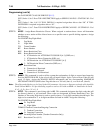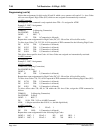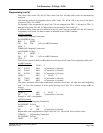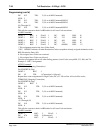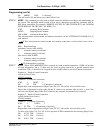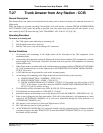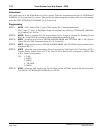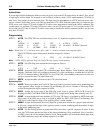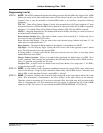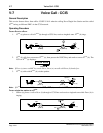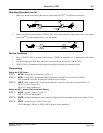
NEAX2400 IPX Feature Programming Manual
Page 1042 NDA-24297, Issue 1
U-5 Uniform Numbering Plan - CCIS
Interactions
If seven-digit Uniform Numbering Plans are used, an access code to the CCIS network may be added. Thus, a total
of eight digits will be dialed. For example, a user in Illinois wishes to reach a CCIS station number (753-4526) in
New York. Two options exist for network setup. The digit 8 may be programmed as a CCIS network access code,
such as a Least Cost Routing access code. The user then dials 8-753-4526. With this option, the 8 is assigned as the
CCIS access code. Digits 8-753 and all other CCIS office codes must then be listed in the AFRS command. The
second option is to program 753 as the CCIS access code, as in an LCR access code. If 753 is assigned as the CCIS
access code, then 753 and all other CCIS office codes must be listed in the AFRS command. In this case, the user
only dials 753-4526.
Programming
STEP 1: ARTD - The CCIS TIE Line voice/data route(s) over T-1 should be assigned as follows:
RT:1
2-ONSG :2 4-INSG :2 5-TF :3 6-TCL:4 7-L/T:1
8-RLP :2 13-AC :1 15-LSG :12 28-ANS:1 30-PAD:7 Optional
43-BT :1 49-TRKS :0/1* 50-DPLY :1
Note: When data “0” is assigned at one office, data “1” must be assigned at the opposite office.
The CCIS TIE Line signal link route(s) should be assigned as follows:
RT:2
6-TCL :4 7-L/T :1 9-TQ :*0 15-LSG:13 30-PAD:7 fixed
Note: * CDN 9:TQ is optional. Only use if an LCR route requires trunk queuing.
STEP 1: ARTD - The LCR Flag route should then be assigned as follows:
RT:31
6-TCL :1 7-L/T :1 9-TQ :1 13-AC :1
STEP 2: ATRK - Assign the LEN of the CCIS voice/data trunks, Route Number, Trunk Number, and Tenant
Number. The trunk LENs will correlate to channels 8-31 of the sub-highway in which the PA-24DTA/
24CCTA is mounted when 1.5M DTI/CCT is used. The LEN corresponding to the last level of the last
group is reserved for the CCIS signal link route.
STEP 3: MBTK - Assign the Make Idle status to the CCIS voice/data trunk.
Numbering Plan
STEP 4: ANPD - Reserve a number level for LCR. This level should correspond to the station numbering plan
of the opposite office. Assign for Normal (N) and Hooking (H) service. Number of Necessary Digits
will be the length of the digits assigned in ASPA.
STEP 5: ASPA - Assign the access code of the LCR flag route. Type of service, SRV= LCR (Least Cost
Routing), LEAST-COST ROUTING-3/6 DIGIT [L-5]. Assign the LCR flag route (usually route 31).
STEP 6: ARNP - Assign the physical route numbers (CCIS voice TIE Lines), as assigned in ARTD, and relate
these routes to the LCR access code as assigned in ASPA for SRV= LCR (Least Cost Routing). The
LCR access code is the first digit of the opposite offices’ station numbers.
STEP 7: AMND - Assign the Maximum Necessary digits the system must translate for a proper route selection.
In this case, assign the first digit of the opposite system’s station numbering and the number of digits
in the station numbering plan.
STEP 8: AFRS - List the dialing patterns in groups that will be served by a specific sequence of routes. In this
case, the CCIS routes and the first digit of the station numbering will be considered. Also, if overflow
to DDD is used, the off-net numbers must be listed. These numbers will include the added digits from
the AOPR command. Assign this dialing sequence to an OPR.




